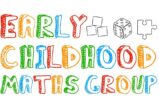
Checklist
Are there:
- Varied routes, levels, slopes and places to hide?
- Things to throw, climb and balance on?
- Large scale versions of indoor resources (such as dice and construction)?
- Weatherproof numerals on fences, steppingstones and washing lines?
- Varied containers of different shapes and sizes?
The outside area provides a wealth of opportunities to develop mathematical concepts in different contexts. It also enables children to learn mathematics by being physically active and to explore and work on a larger scale.

Some resources which can support mathematics learning outdoors:
- Number collars for cones
- Large dice
- Movable and weatherproof number washing line with pegs (perhaps 0 to 10, 20 or 50)
- Numbered and un-numbered stepping-stones for inventing games and developing ordinal number
- Ride on toys with number plates and numbered parking bays (wheelie bin numbers work well)
- Large blocks for block play
- Various different types of bricks, crates, blocks, pallets, large loose parts etc. to build with, make patterns, count and organise.
- Include different levels where possible and encourage children to create different levels
- Chalked and other tracks for opportunities to make routes around the area
- A range of painted on wall markings
- Giant versions of games
- Mud kitchen with opportunities to count and measure (cardinal and ordinal number) including scales, bun-trays, cake tins, varied shapes and sizes of pots, pans and containers etc
- Squeezy bottles and water or buckets and brushes for temporary mark-making with water
- Hoops to make patterns with objects, to throw beanbags into or to create spaces to jump
- Chalked or painted number tracks, targets and hopscotch
- Bean bags (but not the ones with real beans as they sprout), tyres and large buckets and bins for throwing and counting games
- Measuring tools such as timers, balance scales, measuring tapes and height charts
- Large physical play equipment such as balance beams and climbing frames
- Large containers for collecting objects to count and make patterns
- Wheelbarrows and trolleys for transporting

For more about spatial learning in outside areas, see our Spatial reasoning toolkit.



